Fleetwood Mac: Beyond Rumours
Ever wonder which albums sell the most at Paradise Found Records? If you’re looking for what’s popular right now, the Boulder Weekly regularly publishes that week’s biggest sellers. Looking back a few months, special events like Record Store Day skew the numbers toward rare releases from Taylor Swift and the Grateful Dead. But some albums sell steadily regardless of trends and seasons. 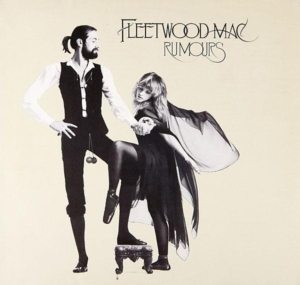 The #1 seller at Paradise Found for many years has been Fleetwood Mac’s Rumours, the pinnacle of seventies Southern California pop-rock that chronicled the simultaneous disintegration of two intra-band marriages. Rumours is tied for eighth on the list of best-selling albums of all-time at forty million copies, and our customers have definitely made a small contribution to that total. Whether you’re starting a new vinyl collection or rebuilding an old one, it’s an essential part of any music library.
The #1 seller at Paradise Found for many years has been Fleetwood Mac’s Rumours, the pinnacle of seventies Southern California pop-rock that chronicled the simultaneous disintegration of two intra-band marriages. Rumours is tied for eighth on the list of best-selling albums of all-time at forty million copies, and our customers have definitely made a small contribution to that total. Whether you’re starting a new vinyl collection or rebuilding an old one, it’s an essential part of any music library.
Anyone that’s ever listened to radio, watched TV or been on TikTok is familiar with “Dreams,” “Go Your Own Way” and “Don’t Stop.” Some might be curious after Daisy Jones & The Six, the best-selling book inspired by the Fleetwood Mac story that spurred an Amazon Prime series that debuted earlier this year. What’s less common knowledge is that the group included eighteen different musicians over a fifty-five-year run that began in 1967 and resulted in seventeen studio albums. The iteration of Fleetwood Mac that created Rumours was its fifth separate lineup, and that doesn’t even include a fake edition that toured in 1974 after a falling out with a manager who claimed he owned the band name and sent out an entirely different batch of musicians under that moniker to prove it. It took a lawsuit to stop that tour, but the silver lining was that the hiatus resulted in the rhythm section of drummer Mick Fleetwood and bassist John McVie–the group’s two constants–moving to Los Angeles, where Fleetwood “discovered” Lindsey Buckingham and Stevie Nicks. Key contributor/pianist Christine McVie didn’t become a full-fledged member until 1971’s Future Games. Also worth noting: the original lineup’s second single way back in 1968 was Peter Green’s “Black Magic Woman,” Santana’s biggest hit until “Smooth.”
Take the time to explore beyond Fleetwood Mac and Rumours, the first two albums to feature Buckingham and Nicks, and there’s an incredibly deep catalog of high-quality classic rock. It might be hard to imagine, but for anyone old enough to remember the band from its inception, Fleetwood Mac was first and foremost a British blues band cut from the Cream cloth, contemporaries of the Jeff Beck Group that launched Rod Stewart before Led Zeppelin conquered the earth. Here, in reverse chronological order, are five gems to help with a deeper dive.
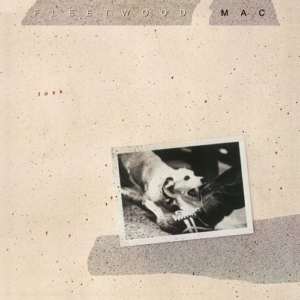
Tusk (1979)
How do you follow-up one of the greatest albums of all-time? Any artist would be challenged to replicate that level of success; Lindsey Buckingham opted to scare off as many casual fans as possible. Coming two years on the heels of Rumours, Tusk just might be the most daring LP ever by such a beloved rock act. A disciple of Brian Wilson, Buckingham went into the studio determined to follow his muse regardless of commercial appeal. In some instances that meant heavily percussive material without a bridge or chorus (the title track), in others fuzzed-out vocals and guitars (“Not That Funny”). Spread over two albums, Tusk dared the listener to step outside the box of sunny Southern California rock. The record has sold less than a tenth as much as its predecessor, but don’t be fooled. The Stevie Nicks and Christine McVie contributions (including “Sara” and “Think About Me”) are as good as anything they produced, and Tusk has built a reputation as an underrated, critically adored treasure over the decades since its release.
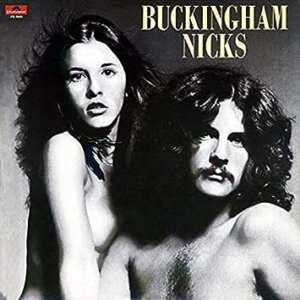
Buckingham Nicks (1973)
Buckingham Nicks isn’t a Fleetwood Mac record per se, but it’s definitely Mac-adjacent. The duo released only one record before Mick Fleetwood heard them on a visit to the famed Sound City Studios in Los Angeles. Fleetwood asked Buckingham to join, but Buckingham said he’d only do it if Nicks was included, a move that worked out well for all involved. Buckingham Nicks includes one track that was re-recorded by the group, “Crystal,” alongside the same proto-SoCal sound that sold gazillions, albeit in a more stripped down, lo-fi setting. There’s still plenty here for fans to love. It also has collector appeal–never repressed after 1977, a used vinyl copy costs between $45 and $75 depending on condition (watch out for counterfeits). Sadly, Buckingham and Nicks have never been able to agree on a re-release, one that would surely sell well since it’s not available on streaming services.
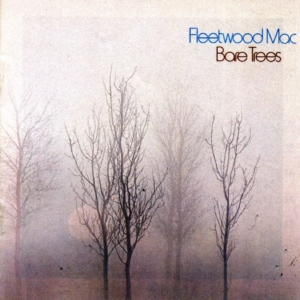
Bare Trees (1972)
Fleetwood Mac started as a showcase for Peter Green’s blues guitar. Like Eric Clapton, Jimmy Page, Jeff Beck and others, there was no shortage of British musicians in the mid-to-late sixties focused on updating and adapting American blues for a more contemporary, rock-hungry audience. The group’s original second guitarist, Jeremy Spencer, famously left the group mid-tour in 1972 after a bad mescaline trip led him into the arms of a Christian cult. By then Fleetwood Mac had already added a third guitarist, Danny Kirwan. Once Spencer left the flock a couple of years after Green’s departure, he was replaced by Bob Welch. Bare Trees is a transitional effort, the last with Kirwan and the first with Welch, but that doesn’t make it any less rewarding. Christine McVie, who married bassist John McVie in 1968, had recently advanced from session player to full member status, and her soulful organ and vocals offer a glimpse of the great success to come. The album includes some of Kirwan’s best songs (“Child of Mine,” “Dust” and the title track), a Bob Welch song (“Sentimental Lady”) that he later reworked into a top ten hit as a solo act, and vintage McVie (“Spare Me a Little”). Bare Trees might be less polished, but it’s almost as infectious as the first two records with Buckingham and Nicks.
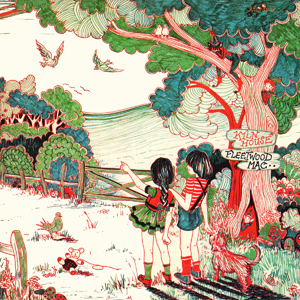
Kiln House (1970)
Fleetwood Mac’s fourth effort was their first without Peter Green, and contained material mostly composed by Danny Kirwan and the soon-to-depart Jeremy Spencer. Christine McVie added vocals and keys and also designed the cover, which referenced the oast (aka hop) house where the band had been living during the recording. Kiln House offers a variety of genres; the highlight is certainly the bluesy “Station Man,” one of the group’s all-time best tracks, which they continued to perform live for decades regardless of membership. It also contains fifties-style rave-ups (“This is The Rock,” “Hi Ho Silver”), classic rock (“Jewel-Eyed Judy”) and even a catchy-but-bizarre country and western composition by Spencer (“Blood on the Floor”). At this point the band was searching for a new sound without its longtime leader, but Kiln House is still a surprisingly strong effort that has aged well.
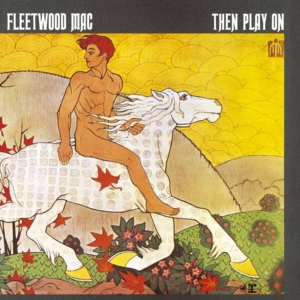
Then Play On (1969)
The group’s third album was the last with founder Peter Green and the first to feature Danny Kirwan. One of Fleetwood Mac’s most-covered songs, “Oh Well,” sprung from the sessions for the LP (although it was omitted from the first pressing). The song has reached a near “Stairway to Heaven” level of ubiquity; it’s been covered by artists as diverse as Tom Petty, Haim and Ratt, although few have bothered with the lengthy, instrumental “Part Two,” which includes Green on cello and sounds like a spaghetti western soundtrack. Then Play On is blues-oriented but still the most commercial record Green made with the group. It showcases a band branching out into more psychedelic-style jamming and starting to show a softer side, even if it’s a far cry from the sound that struck gold six years later.

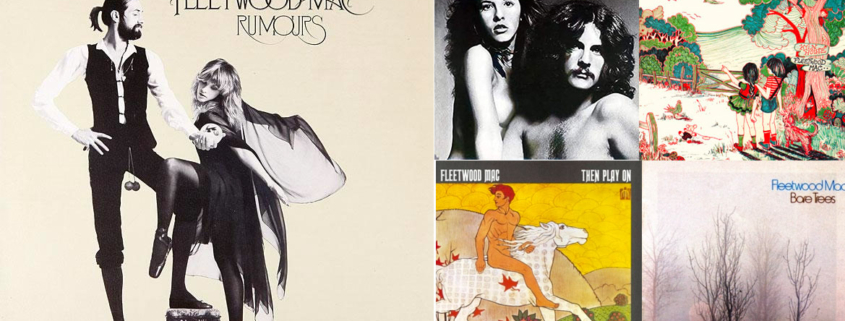


There may be 2 or 3 Fleetwood Mac albums I haven’t heard heard, but because I love British blues I like all of the incarnations of F.Mac.I’ll have to give Future Games a spin
Very good writing. A big step above most music writing. I want to ad that one of FM’s very best songs was not included on Rumours. “Silver Spring” was only available as a B side until 20 years later when it was finally given a space on “The Dance”. the song was clearly about the breakup with Lindsay and he didn’t want it on the album. Read the lyrics if you have any questions.
I’m also very pleased at how popular the band has become partly due to harry Style’s terrific version of “The Chain” and his duet with Stevie on “Stop Draggin’ My Heart Around”
Oh and welcome to Petaluma. I’ll be back in again soon with some fine wax.